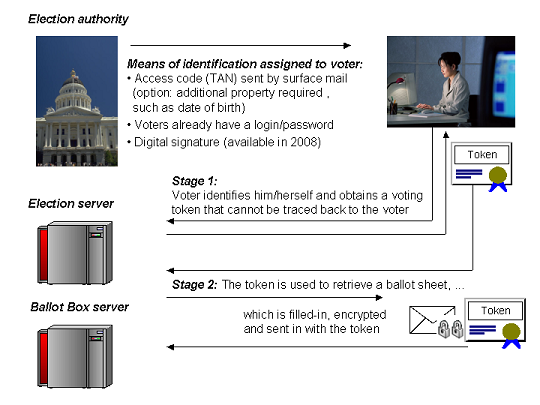What are the Organisational Scenarios for EVOTE?
Due to its flexibility, EVOTE supports several election scenarios:

Stage 1 and 2 may be combined in one transaction or they may be two separate transactions following the principle of postal voting, where voters register and obtain a voting card (here an electronic voting token) and later cast their vote. This procedure offers the advantage that if registration for e-voting ends some time before general voting starts, voters, who have not registered for e-voting (or postal voting) are printed on the paper rolls distributed to the polling stations. Hence, polling stations need not be equipped with online access to the voter roll which makes e-voting considerably more cost-effective.
In either case voter secrecy is protected by the voting token which due to the cryptographic algorithms used, cannot be traced back to the voter, but nevertheless cannot be forged by a third party. Optionally, a second digital signature by an independent authority may be added using the Verifier module.
Election fraud – and the most dangerous adversary here is the election server administration themselves – is among other measures prevented by the public keys provided by the election committee. The vote is encrypted in the Voting Client inaccessible to the server administration. Only the election committee in its entirety or in a pre-defined quorum decision may open the ballot and count it. The token authenticated by the election server and an optional Verifier is inextricably linked to the vote – a link, which again can only be viewed and verified by the election committee.
